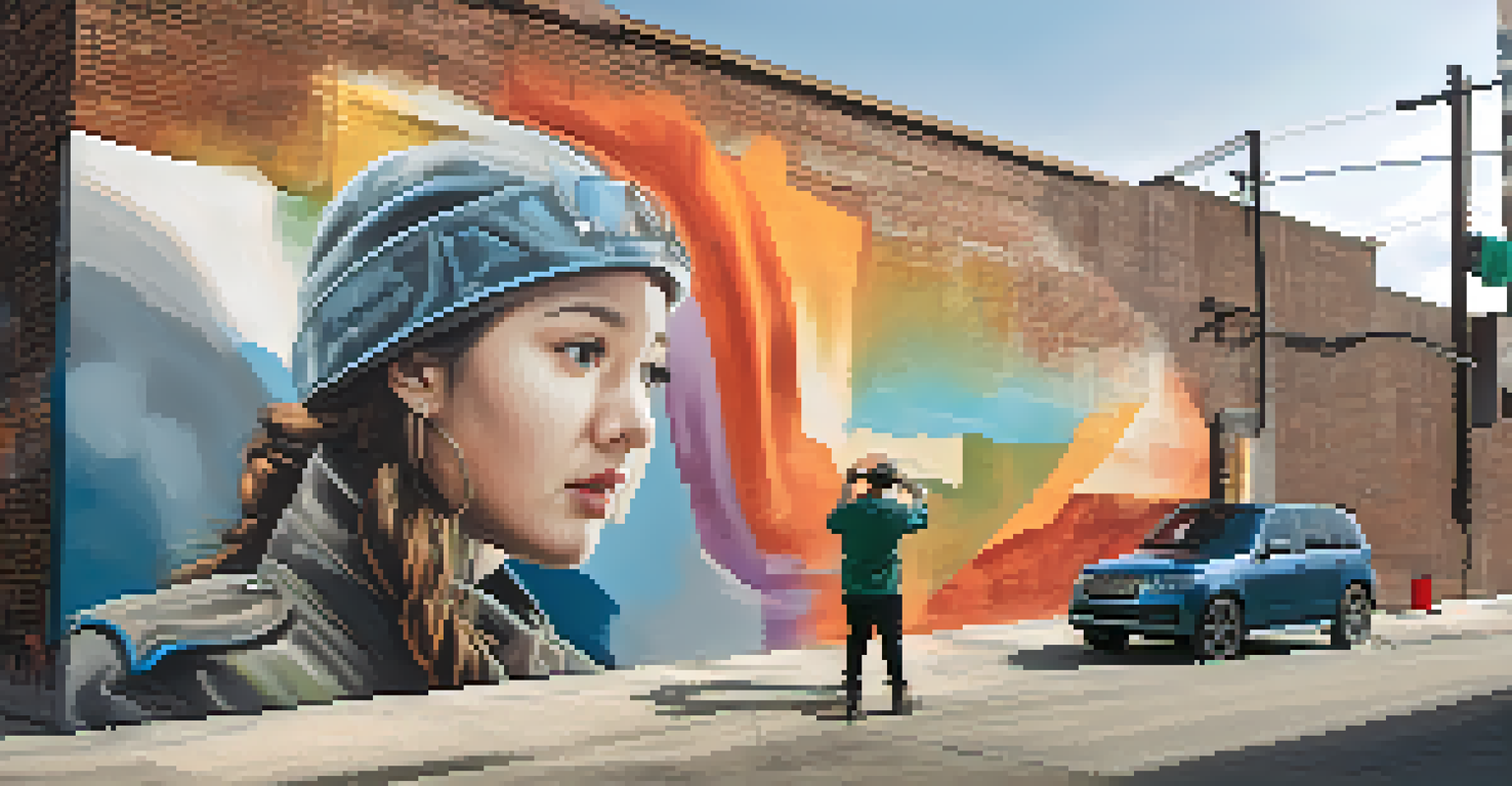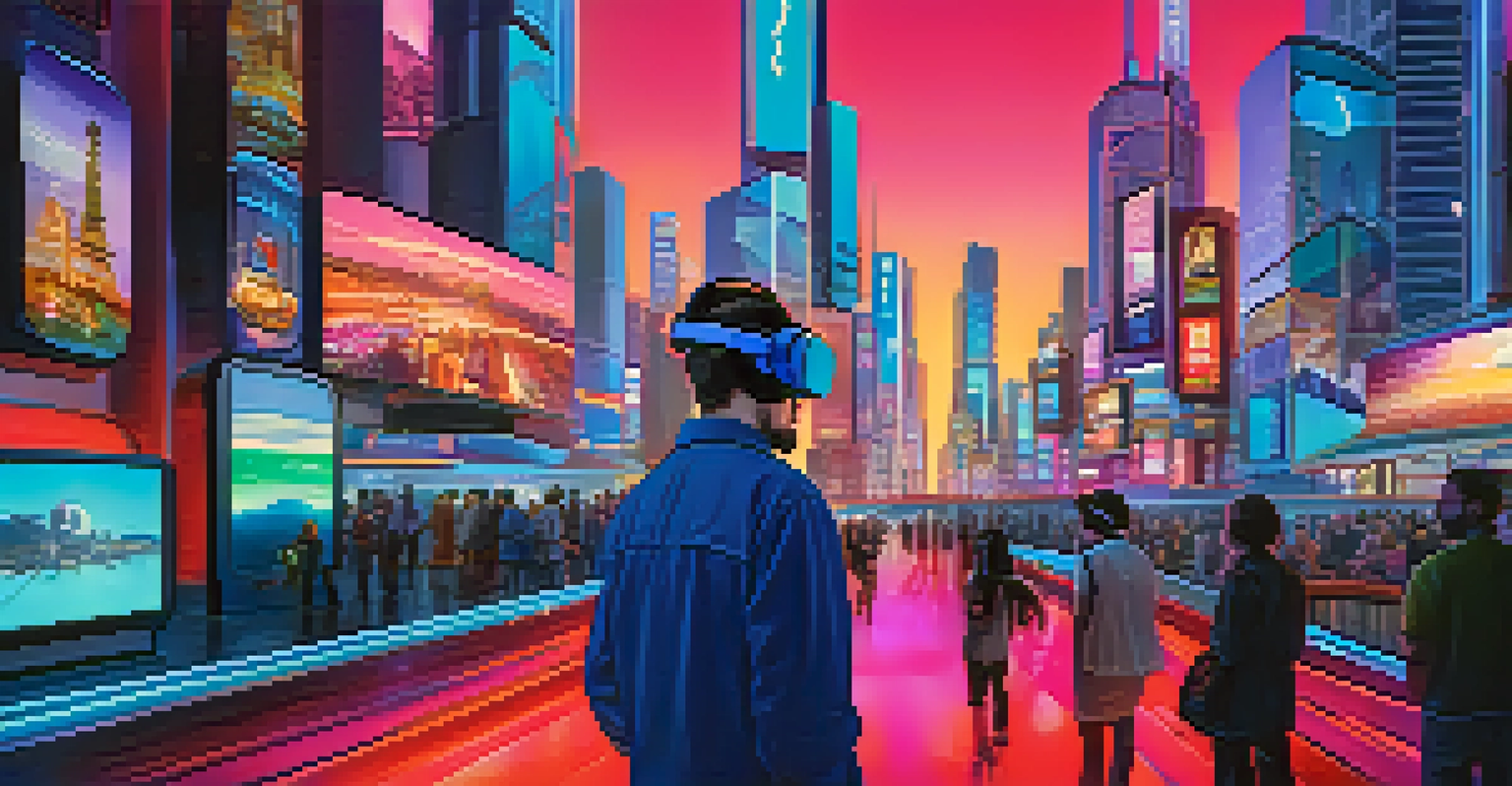Advertising and Art: A Symbiotic Relationship in Modern Media

The Intricate Connection Between Advertising and Art
At first glance, advertising and art might seem worlds apart, but they share a deep-rooted connection. Both disciplines aim to communicate ideas, evoke emotions, and capture attention. Advertising employs artistic elements to make products appealing, while art often critiques or comments on societal norms, including consumerism. This relationship shows how creativity can drive commerce and reflect culture simultaneously.
Art is the most beautiful of all lies; it is the only truth.
For example, think of iconic ads like Apple's 'Think Different' campaign. It combined stunning visuals with a profound message, elevating a simple advertisement into a work of art. This blending of aesthetics and marketing not only promotes products but also shapes cultural narratives, proving that advertising can be a powerful storytelling medium.
Ultimately, the interplay between advertising and art enriches both fields. By leveraging artistic principles, advertisers can create more engaging content, while artists can reach wider audiences through commercial platforms. This synergy encourages innovation and inspires new ways to connect with consumers.
How Art Influences Advertising Strategies
Artistic styles and movements have always influenced advertising strategies. From the bold colors of Pop Art to the minimalist aesthetics of Scandinavian design, advertisers borrow elements from these styles to attract attention and convey messages. This influence creates a visual language that resonates with audiences and makes brands more relatable.

Consider the use of surrealism in advertising. Brands like Volkswagen and Levi’s have successfully employed this style to create memorable campaigns that challenge viewers' perceptions. By incorporating unexpected visuals, these advertisements not only stand out but also encourage consumers to think differently about the products being offered.
Advertising as Artistic Expression
Advertising and art share a deep connection, using creativity to evoke emotions and communicate messages.
By embracing artistic techniques, advertisers can evoke emotions and create meaningful connections with their audience. This approach leads to more than just sales; it fosters brand loyalty and encourages consumers to engage with the brand on a deeper level.
The Role of Digital Art in Modern Advertising
As technology evolves, so does the nature of art in advertising. Digital art has become a cornerstone of modern marketing, allowing for dynamic and interactive experiences that traditional media cannot match. This shift has opened doors for creativity, enabling brands to experiment with animation, augmented reality, and virtual environments.
Good advertising does not just circulate information. It penetrates the public mind with desires and belief.
Take, for instance, the rise of social media platforms that prioritize visual content. Brands now utilize eye-catching digital art to capture attention quickly while scrolling through feeds. This trend emphasizes the importance of creating visually striking content that stands out in a crowded digital landscape.
Moreover, digital art allows for customization and personalization, tailoring advertising experiences to individual preferences. This not only enhances user engagement but also reflects the growing demand for authenticity in advertising, bridging the gap between art and commerce.
Art as a Tool for Brand Storytelling
In today's market, storytelling has become an essential aspect of advertising, and art plays a pivotal role in this process. Brands are increasingly using artistic narratives to convey their values and connect with consumers emotionally. By weaving compelling stories into their campaigns, they can create a more profound impact than traditional sales pitches.
For example, Coca-Cola's 'Share a Coke' campaign utilized personalized labels to tell a story about connection and community. The artistic approach of customizing each bottle transformed a simple product into a personal experience, encouraging consumers to share their stories with others.
Art Shapes Consumer Perceptions
The integration of art in advertising elevates brand image and influences consumer buying decisions.
This focus on storytelling through art not only enhances brand identity but also fosters a sense of belonging among consumers. When people feel connected to a brand's narrative, they are more likely to engage and advocate for it, turning customers into brand ambassadors.
The Impact of Art on Consumer Perception
Art has the extraordinary ability to shape consumer perception, influencing how products and brands are viewed. A well-crafted advertisement can elevate a product from ordinary to desirable, simply through compelling visuals and creative concepts. This transformation occurs because art evokes emotions and associations that can significantly affect buying decisions.
Think about luxury brands like Chanel or Gucci. Their advertisements often feature high-fashion photography, artistic direction, and cultural references that create an aspirational image. This artful approach not only enhances the perceived value of their products but also positions the brands within a specific lifestyle narrative.
As consumers become more visually literate, they tend to seek out brands that resonate with their tastes and values. This shift highlights the importance of incorporating art into advertising strategies to create positive perceptions and foster brand loyalty.
Collaborations Between Artists and Brands
Collaborations between artists and brands have become increasingly popular, resulting in innovative advertising that pushes creative boundaries. These partnerships often lead to unique campaigns that blend artistic expression with commercial goals, creating a win-win situation for both parties. Such collaborations can elevate a brand's image while providing artists with wider exposure and recognition.
A notable example is the partnership between Nike and renowned artist Takashi Murakami, who designed limited-edition sneakers that became instant collectibles. This collaboration combined the worlds of high fashion and sportswear, showcasing how art can enhance a brand's appeal and attract diverse audiences.
Collaborative Innovation in Marketing
Partnerships between artists and brands foster unique campaigns that blend artistic expression with commercial goals.
These artistic collaborations encourage brands to think outside the box and embrace creativity in their marketing efforts. By working with artists, companies can infuse fresh perspectives into their campaigns, making them more relevant and engaging to consumers.
The Future of Advertising and Art Integration
As we look to the future, the integration of advertising and art is likely to evolve even further. With advancements in technology and changing consumer behaviors, brands will need to adapt their strategies to remain relevant. The rise of artificial intelligence and virtual reality offers exciting opportunities for creating immersive advertising experiences that blur the lines between art and commerce.
Moreover, as consumers increasingly value authenticity and social responsibility, brands will be challenged to align their artistic expressions with ethical practices. This means prioritizing sustainability and inclusivity in their advertising strategies, ensuring that art serves a purpose beyond mere aesthetics.

Ultimately, the future of advertising and art will hinge on the ability to innovate while maintaining a genuine connection with audiences. By fostering creativity and collaboration, brands can continue to captivate consumers and thrive in an ever-changing landscape.